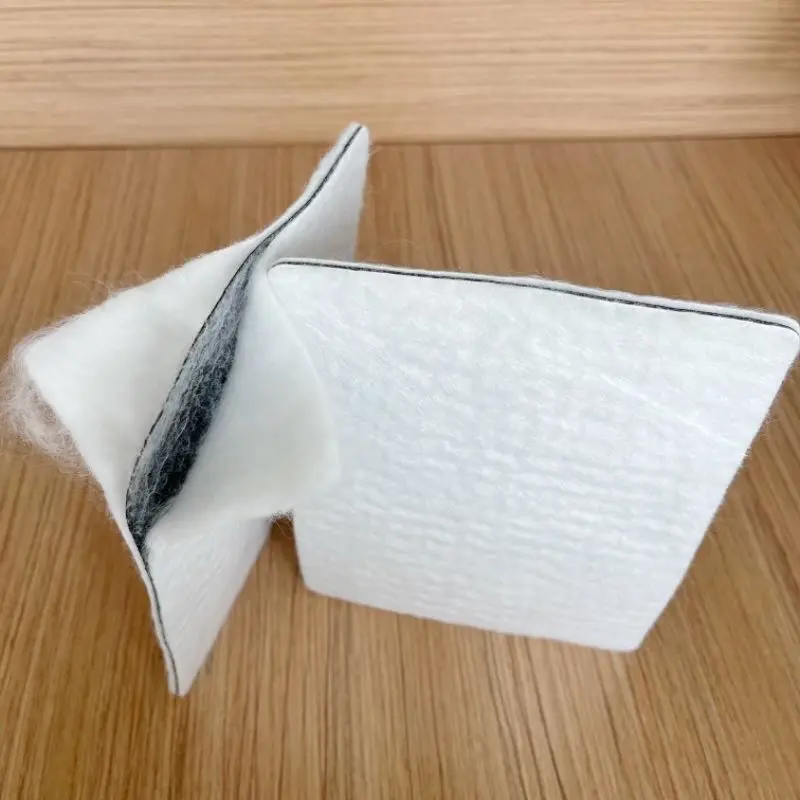![]() Filament composite geomembrane.pdf
Filament composite geomembrane.pdf
Composite geomembrane non-woven geotextile plays a pivotal role in road construction, offering multifaceted benefits in enhancing the road's structural integrity. During the construction process, several crucial steps are involved in utilizing this composite material.
Initially, the designated area for road construction undergoes meticulous preparation, ensuring a clean and compacted surface devoid of any debris or irregularities. Subsequently, the non-woven geotextile layer of the composite is carefully positioned over the prepared surface. This layer serves as a protective barrier, preventing the mixing of different soil layers and maintaining the integrity of the road structure.681785.webp)
Following the placement of the non-woven geotextile, the geomembrane layer is overlaid. This impermeable layer acts as a barrier against moisture and contaminants, safeguarding the road from water infiltration and potential damage caused by chemicals or pollutants.
Once both layers are properly positioned, subsequent layers of construction materials such as aggregates, asphalt, or other road surface materials are applied on top. The composite geomembrane non-woven geotextile functions as a stabilizing force, reinforcing the road structure, preventing soil erosion, and providing additional support to bear heavy loads.
785136.webp)
Adhering to recommended installation procedures and guidelines is essential throughout the construction process to ensure the effective performance of the composite geomembrane non-woven geotextile. This meticulous approach guarantees a durable and resilient road surface, capable of withstanding various environmental factors and traffic loads, ensuring the road's longevity and reliability.
Certainly, here are a few frequently asked questions (FAQs) about Composite geomembrane non-woven geotextile for roads that align with consumer needs:
What is Composite geomembrane non-woven geotextile, and how does it benefit road construction?
Composite geomembrane non-woven geotextile is a specialized material composed of multiple layers, offering a barrier against moisture, reinforcing roads, and preventing soil mixing. It enhances road durability, stability, and lifespan.
How does this geotextile aid in road longevity?
This composite geotextile acts as a protective layer, preventing the intrusion of water and contaminants, minimizing soil erosion, and maintaining the roadbed's stability. Ultimately, it extends the road's service life by reducing potential damage.
Is it environmentally friendly?
Yes, most composite geomembrane non-woven geotextiles are environmentally safe. They are designed to withstand harsh conditions without leaching harmful substances into the soil, ensuring minimal environmental impact.
Does it help in reducing maintenance costs for roads?
Absolutely, by reinforcing the road structure and reducing erosion, this geotextile diminishes maintenance needs. It minimizes cracking, rutting, and deformation, thereby lowering maintenance costs over the road's lifespan.
Can it withstand varying climatic conditions and heavy traffic loads?
Yes, these geotextiles are engineered to withstand diverse weather conditions and heavy traffic loads. They provide stability, prevent structural deformities, and maintain road integrity even under high stress conditions.
How crucial is proper installation for its effectiveness?
Proper installation is essential. Following manufacturer guidelines and employing professional installation ensures optimal performance and maximizes the benefits of the composite geomembrane non-woven geotextile for road construction.
253.webp)
257.webp)
374.webp)
354.webp)
503.webp)
759.webp)
992.webp)

855.webp)